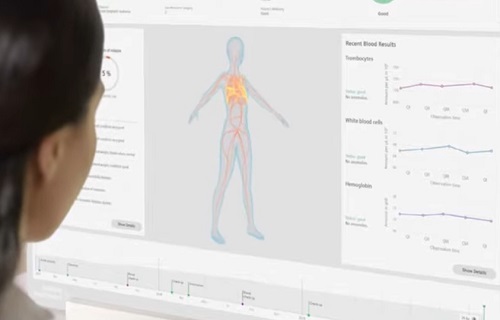What is Lumateperone?
Lumateperone (Caplyta) is an antipsychotic medication used to treat schizophrenia and bipolar depression. It works by effecting dopamine, serotonin and glutamate in the brain to help regulate mood and psychotic symptoms.
Clinical Trials Of Lumateperone
- Clinical Trials: The FDA approved lumateperone based on evidence from three clinical trials (Trial 1/NCT01499563, Trial 2/NCT02282761 and Trial 3/NCT02469155) that enrolled 818 adult participants with schizophrenia.
Bipolar Depression:
- Study 404: In this Phase III trial, patients received 42 mg of lumateperone once daily or placebo for six weeks. Patients treated with lumateperone showed a statistically significant improvement in depressive symptoms compared to placebo with a change in the Montgomery-Åsberg Depression Rating Scale (MADRS) total score of 4.6 points.
- Study 401: This Phase III trial did not meet its primary endpoint, as lumateperone didn’t demonstrate a statistically significant separation from placebo on the MADRS total score.
- Study 501: In this Phase III trial evaluating lumateperone as an adjunctive therapy to antidepressants in major depressive disorder (MDD). Lumateperone 42 mg met the primary endpoint by demonstrating a statistically significant and clinically meaningful reduction in the MADRS total score compared to placebo at week 6. The least squares (LS) mean reduction from baseline for lumateperone was 14.7 points versus 9.8 points for placebo (LS mean difference = -4.9 points; p<0.0001; effect size = 0.61).

What Are The Side Effects Of Lumateperone?
Common Side Effects Of Lumateperone (≥5% of patients in clinical trials)
- Somnolence (Drowsiness/Fatigue): Reported in 24% of patients which is higher than placebo. It may effect daily activities.
- Dry Mouth: Happen in a small percentage of patients but can be managed with hydration.
- Dizziness: Some users experience dizziness especially when standing up quickly because of its effects on blood pressure and neurotransmitters.
- Nausea: Reported in 9% of patients slightly more than the placebo group.
- Increased Appetite & Weight Gain: Less common than with other antipsychotics but still a potential issue. Clinical trials show that weight gain was minimal with an average increase of 0.6 kg (~1.3 lbs) over 4–6 weeks.
Serious Side Effects Of Lumateperone
1. Extrapyramidal Symptoms (EPS) & Movement Disorders
- Low risk compared to other antipsychotics.
- Includes tremors, muscle stiffness, akathisia (restlessness).
- Seen in 2.3% of lumateperone users vs. 1.7% with placebo.
2. Metabolic Effects
- Blood Sugar Changes: Increases in glucose and cholesterol could be seen but are less severe than with other antipsychotics like olanzapine.
- Weight Gain: Clinical trials reported an average weight gain of 1–2 lbs (0.5–1 kg) over 6 weeks. This is lower than many second-generation antipsychotics.
3. Orthostatic Hypotension (Low Blood Pressure When Standing)
- Can lead to dizziness or fainting especially in elderly patients.
- Seen in 2% of patients in trials.
4. Neuroleptic Malignant Syndrome (NMS) – Rare but Life-Threatening
- Symptoms; high fever, confusion, stiff muscles and irregular heartbeat.
- Very rare (<1%) but requires immediate medical attention.
5. Increased Risk of Death in Elderly Patients with Dementia-Related Psychosis
- Lumateperone is not approved for dementia-related psychosis because of increased risk of stroke or death like other antipsychotics.
What Are The Costs Of Lumateperone?
United States:
- Retail Price: About $1,794 for a 30-capsule supply of 42 mg capsules.
- Discounted Prices: Prices can start at $1,471.50 with discount programs.
- Insurance Coverage: Caplyta is covered by many insurance plans. Eligible patients may pay as little as $0 for their first two fills (up to a 30-day supply) and $15 for subsequent fills (up to a 90-day supply) with the Caplyta Savings Card.
Canada:
- Availability: Caplyta is approved for use in Canada.
- Pricing: Specific pricing information is not readily available. Medication costs can cahnge according to factors such as provincial drug plans and pharmacy pricing.
- Insurance Coverage: Coverage may vary depending on the province and individual insurance plans.
United Kingdom:
- Availability: Caplyta is not approved for use in the UK.
- Pricing: Not applicable due to lack of approval.
- Insurance Coverage: Not applicable.
Australia:
- Availability: Caplyta is approved for use in Australia.
- Pricing: Specific pricing information is not readily available. Costs can change according to factors such as the Pharmaceutical Benefits Scheme (PBS) listings and pharmacy pricing.
- Insurance Coverage: Coverage can change on the PBS and individual insurance plans.
You can find a comparison of Schizophrenia medications from every angle to help you make the best decision about which is best for you;

What Are The Dosages Of Lumateperone?
1. Schizophrenia Treatment
Initial and Maintenance Dose:
- 42 mg once daily administered once a day.
- This is the standard starting dose and is also the maintenance dose for most patients.
- No dose escalation is required; the medication is well-tolerated at this level.
Administration:
- Take with food for better absorption because food increases the bioavailability of the medication.
- Lumateperone can be taken at any time of the day but consistency is key to avoid missing doses.
Maximum Dose:
- 42 mg/day (maximum dose). There is no benefit in increasing the dose beyond this and higher doses may increase side effects.
Dose Adjustments:
- Renal/Hepatic Impairment: No specific dose adjustments are recommended for mild-to-moderate renal or hepatic impairment but use caution with severe renal or hepatic dysfunction. Always check with the prescribing doctor before making any adjustments.
- Older Adults: No special dose adjustment is necessary for elderly patients though close monitoring is recommended because of potential age-related changes in metabolism.
2. Bipolar Depression Treatment
Initial and Maintenance Dose:
- 42 mg once daily like as for schizophrenia.
- This dose has been shown to be effective for reducing depressive symptoms in patients with bipolar depression specifically as a monotherapy.
Administration:
- As like schizophrenia treatment take with food for optimal absorption.
- It is crucial to maintain consistency in the time of day the dose is taken for best results and to reduce the risk of missed doses.
Maximum Dose:
- 42 mg/day. No evidence suggests that increasing the dose provides additional therapeutic benefit for bipolar depression. Higher doses can increase the risk of side effects.
Dose Adjustments:
- No dose adjustments are needed for most patients but caution should be exercised for patients with significant renal or liver impairment.
Other Considerations
- Starting Treatment: If a patient has never taken an antipsychotic before, a 42 mg/day dose is often the starting point without the need for gradual titration.
- Switching from Other Antipsychotics: When switching from other antipsychotic medications to Lumateperone; it’s best to continue the new medication at the standard 42 mg dose without any upward titration unless directed by a doctor.
- No Special Dosing for Gender/Age: Lumateperone is dosed the same for both men and women and older adults generally do not require any dose adjustment.
- Elderly Consideration: While elderly patients don’t need a dose reduction, monitoring is important for side effects such as sedation or cognitive changes. Especially in those with cognitive impairment or other comorbid conditions.
Special Populations
- Pregnancy & Lactation: The safety of Lumateperone during pregnancy and breastfeeding is not fully established. It should be used only if the potential benefit justifies the potential risk to the fetus or infant.
- Children & Adolescents: Lumateperone is not approved for use in children and has no established safety profile in this age group.
We wish a healthy and happy life to you. Also you can find detail about schizophrenia in below:

